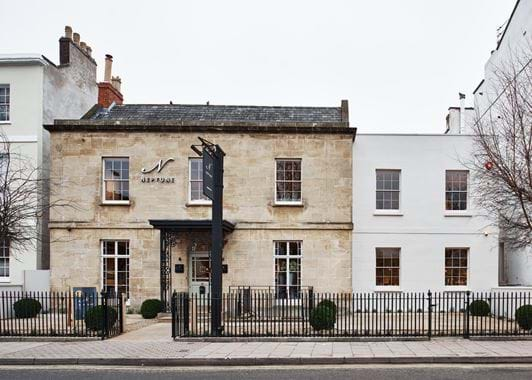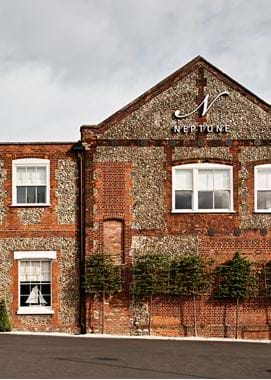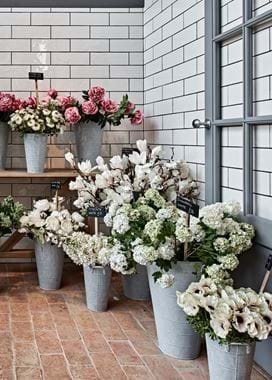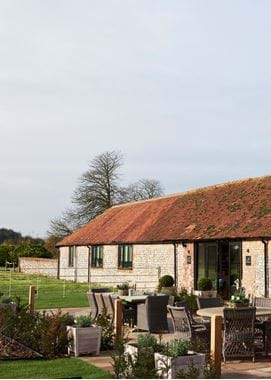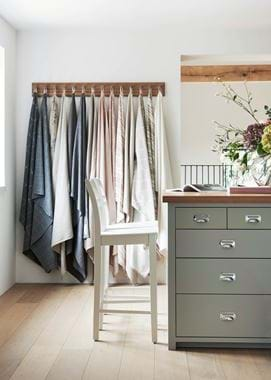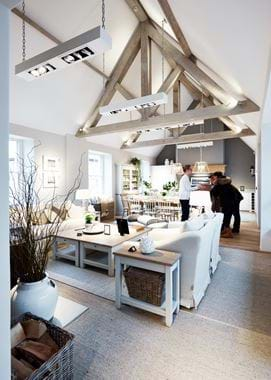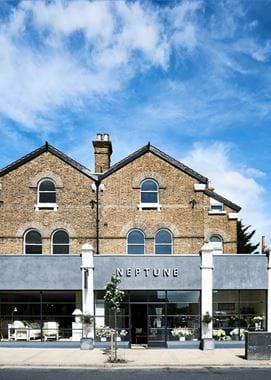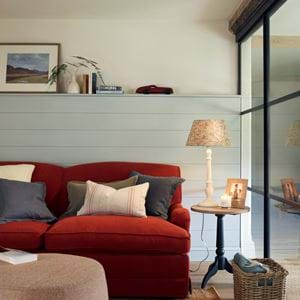The story behind our stores
The story behind our stores
In March 2012, we opened our first store – Neptune Winchester. We’ve come such a long way since then, opening a further 24 stores in the UK and across the channel, with several more on our horizon for this year alone. But, even though we’ve learnt some things along the way, how we do things hasn’t really changed at all. We’re still aiming to create places that look more like homes rather than stores, to create places that you’ll want to come back to, even if it’s just to say a quick hello, and perhaps most importantly, to create places where you’ll feel perfectly at home from the moment you close our front door behind you.
Every Neptune store has its own story.
No two buildings are ever remotely the same in terms of their history. Some might’ve been former public houses; Neptune Chester used to be The Nag’s Head, Neptune York was The Tanglewood, and Neptune Farnham was The Wellington. Some were historic buildings of some sort; Neptune Reading was a 17th-century gate lodge called Monksmead House, Neptune Hailsham served as a terminal for the long-gone (and sweetly-named) Cuckoo Line railway, and Neptune Belfast was once the home of the largest independent bakery in Ireland. Others might be former warehouses, barns or shops that we’ve renovated entirely and brought back to life, like Neptune Canterbury, Weybridge and Wimbledon.
What they almost always had in common is that they’d been unloved for a long time, and sadly were more than a little worse for wear.
“It can take a very, very long time to find the right place for us to move into, but when we do, we work with the building. We respect its history,” explains Tim Buxton, our head of property. “If there are original features, we celebrate them. If it’s listed, we do everything we can to make sure it’ll keep standing, like re-pointing stonework and putting in the right windows. If there are things that the building needs to be its very best, we’ll do them. We don’t believe in taking shortcuts, we’re happy to go back to the drawing board and start afresh. We do things properly, carefully and thoroughly so the building is restored to its former glory, or in some cases, it’s a case of letting it reach a potential that it never had the chance to before.
“We’re currently working on a soon-to-be-announced store opening that we really have developed entirely from scratch. We’re yet to open a store that’s involved completely demolishing what was there before and building something totally new, but it was in such a shocking condition. The fabric of the building was cheap, there was no insulation, there were seven different levels on just one floor – it was a bit of a disaster, but the location and surroundings were perfect for us. So, we applied for permission to convert it into a retail space and then again for demolition. We’ve had both granted and are now incredibly excited to be working on the transformation.”
Building a Neptune store is far from solely about architecture, bricks and mortar. There’s the interior – this has a huge role to play in turning it into a home. Our team of store designers and visual merchandisers handle this part. They work alongside our build team to create, dress, fill and style hallways, living rooms, dining rooms, kitchens, bedrooms and gardens (if there’s the space).
There’s also the team that works in that particular store – they’re just as important in making our stores feel like homes. It’s no use creating a space that looks lovely and is made well if it’s filled with people who don’t reflect who we are and what we stand for. We take our time over finding exactly the right people to make you feel like you’re being welcomed by an old friend every time you stop by.
And then there’s our neighbours, who we want to feel respected and considered from day one. “We always talk to our neighbours when we’re looking at coming to a new area,” Tim continued. “It’s part of the planning process, but we’d always do it anyway because it’s the right thing to do. We speak to the local parish, local business groups, and a number of people who live not too far away. I can honestly say we’ve never had any problems once we’ve explained our approach and they can see how we’re going to lift a building that’s been neglected. They also always seem to appreciate how we try to source materials from the local area as much as we can – such as shingle, bricks, roofing materials and stone – to reflect the local vernacular. We’re always welcomed with open arms, which is lovely and just makes the process so much easier, and happier.”
One of the difficult bits though is location. Just like moving house, there’s the age-old question of location versus the building. We have to compromise somewhere, but it’s incredibly hard to do that, no matter how much practice we have at doing it. “We don’t really have a stand-out criteria when selecting stores,” Tim continued. “Sometimes it might be that the location is so absolutely spot-on that we have to think about how we can design-out any concerns we have with the building. Other times, we can’t believe our fortune with an amazing building we’ve found that we can’t let it pass us by and we have to hope that people are happy to travel a little further to visit us. It’s a case of give and take. When we do decide on a property though, we’ll always try to secure the freehold. Our stores are long-term investments for us. More than 60% of our stores are freehold. When they’re not, such as our London ones, it’s because it’s just not available so we have to accept a leasehold.”
With everything we do, we believe in doing the right thing and in doing things properly. Our stores are one of the strongest ways we show that belief. Like we said at the beginning of this article, they’re more than stores, they’re homes.
More than that, they’re our forever homes.
A home from home
We have stores as far north as York and as far south as Bournemouth, as well as several overseas. Find your closest one and come make yourself at home.

